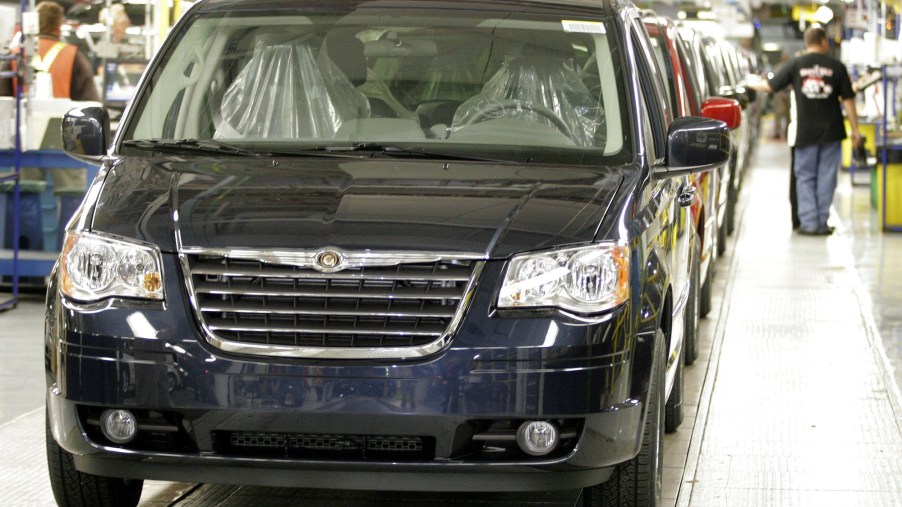
Dodge Caravan (1984-2020): A History of the Paragon of Minivans
To a difficult year, we add the loss of the Dodge Caravan. Though certainly not a tragedy in the grander scheme of life, it was a much-beloved minivan with a long history over many decades. The 2020 model year was the last one to be manufactured. Here’s a look back at this pioneering family vehicle.
The birth of the minivan
The Dodge Caravan was the love child of a station wagon and a van. Chrysler, now Fiat Chrysler, introduced the Caravan for the 1984 model year, along with the Plymouth Voyager. The two minivans ushered in a new trend in vehicle buying, according to Business Insider. Lee Iacocca, who had joined Chrysler in the late 1970s, headed the automaker’s minivan project. The Caravan’s success helped rescue Chrysler, which had accepted a $1.5 billion loan guarantee from the U.S. government.
The popularity of the Dodge Caravan and Grand Caravan
The minivan began a new trend in family vehicles, and the Dodge Caravan and others like it soon took market share away from the station wagon. With the Caravan’s runaway success, Chrysler sold 209,000 minivans during the first model year.
Dodge even offered a turbocharged Caravan for two years in the late ’80s, and the longer Grand Caravan debuted in 1987, according to autoevolution. Chrysler added the more luxurious Town & Country minivan in 1990. By the following year, Chrysler manufactured 50 percent of all minivans. By the late ’90s, the automaker sold about 600,000 minivans annually. The minivan remained popular from the ’80s to 2000.
The Dodge Caravan was one of the top minivans during that time, and Chrysler was the number one minivan producer. By 2000, almost 1.4 million minivans were sold across the entire market. In 2019, Fiat Chrysler sold 54 percent of all minivans in the United States, and the Dodge Grand Caravan was the best-selling U.S. minivan, according to Business Insider.
The end of the road for the Caravan
Minivans soon began to develop a reputation for being uncool, according to USA Today. With their “soccer mom” status, minivans became less appealing for families, who began to purchase more rugged-looking SUVs and crossovers. After peaking in 2000, minivan sales have declined, and many minivans have been discontinued.
Since 2005, more than 13 minivan models have been retired. Only 2.8 percent of total U.S. vehicles sales in 2018 were minivans. The shorter Dodge Caravan was already discontinued after its model year 2007, according to Edmunds. Manufacturing of the longer Dodge Grand Caravan ended in May 2020, hammering the final nail in the Caravan’s coffin.
It was tough to fit in
MotorTrend points out that the Dodge Grand Caravan would have had trouble competing with the appealing minivans of 2021 anyway. Though the Grand Caravan was nice to drive, it just wasn’t as great as the Chrysler Pacifica. The Grand Caravan arrived in a simpler time for vehicles, and today’s minivans offer many more luxury and technology features. Dodge, too, has changed over the years, presenting a more muscular image at odds with the minivan’s soccer-mom sensibility.
After the Caravan’s nearly 40 years on the assembly line, the Dodge Charger, Challenger, and Durango have taken up the mantle. The Caravan is also survived by fellow Chrysler minivans — the Pacifica and the Voyager — and the Kia Sedona, Honda Odyssey, and Toyota Sienna.


